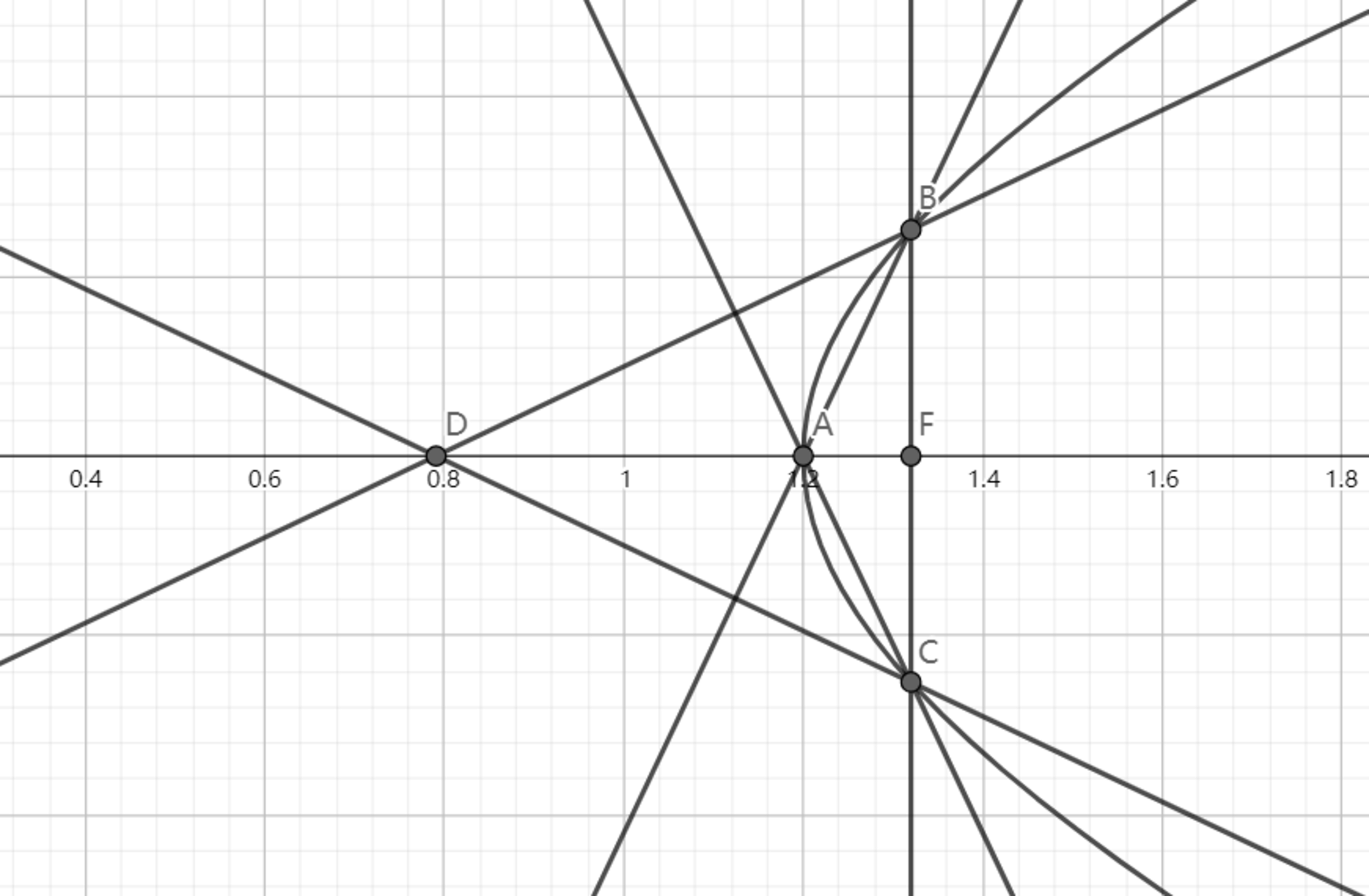SAT1000 - P767

As shown above, the hyperbola: has right focus point , right vertex .
Line passes through and it intersects with the hyperbola at point , passes through and , passes through and , intersects at point .
If the distance from to line is less than , what is the range of the slope of the hyperbola's asymptotes?
Have a look at my problem set: SAT 1000 problems
This section requires Javascript.
You are seeing this because something didn't load right. We suggest you, (a) try
refreshing the page, (b) enabling javascript if it is disabled on your browser and,
finally, (c)
loading the
non-javascript version of this page
. We're sorry about the hassle.
Position coordinates of B are ( a 2 + b 2 , a b 2 ) .
Slope of A C is − a a 2 + b 2 − a 2 b 2 ⟹
slope of B D is b 2 a a 2 + b 2 − a 2 .
So, the equation of B D is
y = b 2 a a 2 + b 2 − a 2 x − b 2 a ( a 2 + b 2 ) − a 2 a 2 + b 2 + a b 2 .
y -coordinate of D is zero. So it's x -coordinate is
− a a 2 + b 2 − a 2 1 ( a b 4 − a 2 ( a 2 + b 2 ) + a 3 a 2 + b 2 ) .
So, by the given condition,
a 2 a 2 + b 2 − a 3 1 ( a 3 a 2 + b 2 + b 4 − a 2 ( a 2 + b 2 ) ) < a
⟹ b 4 − a 2 b 2 < 0 ⟹ b 2 < a 2 ⟹ b < a or b > − a .
Hence the slope of the asymptotes of the hyperbola lies in the range ( − 1 , 0 ) ∪ ( 0 , 1 ) .